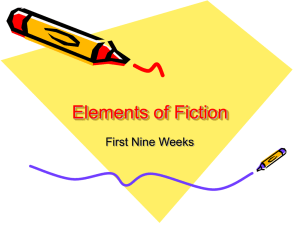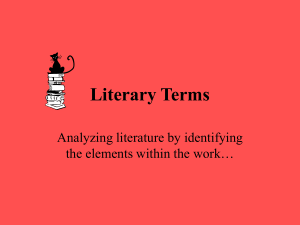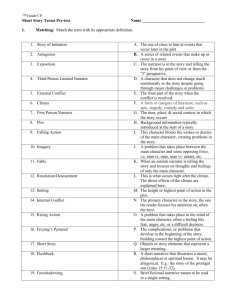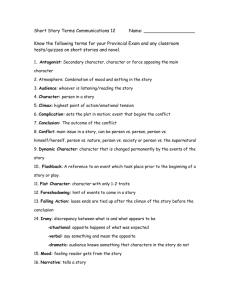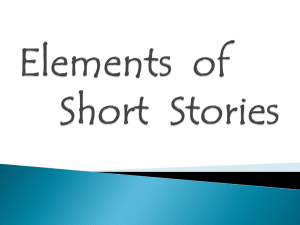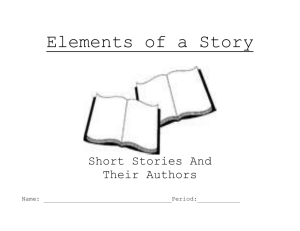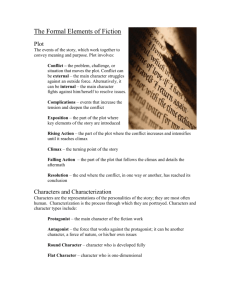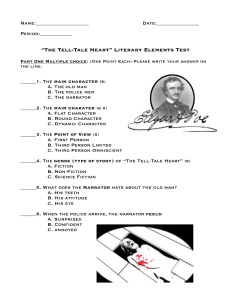Elements_of_Fiction_Notes
advertisement
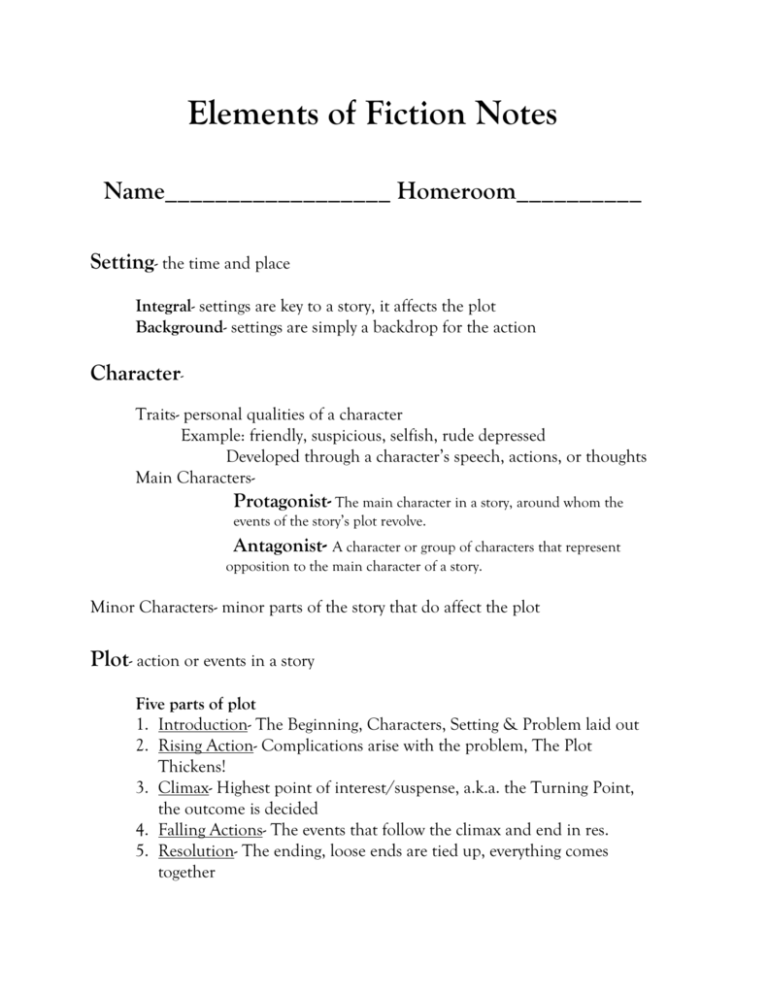
Elements of Fiction Notes Name__________________ Homeroom__________ Setting- the time and place Integral- settings are key to a story, it affects the plot Background- settings are simply a backdrop for the action CharacterTraits- personal qualities of a character Example: friendly, suspicious, selfish, rude depressed Developed through a character’s speech, actions, or thoughts Main Characters- Protagonist- The main character in a story, around whom the events of the story’s plot revolve. Antagonist- A character or group of characters that represent opposition to the main character of a story. Minor Characters- minor parts of the story that do affect the plot Plot- action or events in a story Five parts of plot 1. Introduction- The Beginning, Characters, Setting & Problem laid out 2. Rising Action- Complications arise with the problem, The Plot Thickens! 3. Climax- Highest point of interest/suspense, a.k.a. the Turning Point, the outcome is decided 4. Falling Actions- The events that follow the climax and end in res. 5. Resolution- The ending, loose ends are tied up, everything comes together E F D G Introduction A B C Elements of Fiction A – Characters – who is in the story B – Setting – where and when the story takes place C –Conflict – problem D – Rising Action – story gets better (most of plot fits here) E – Climax – Highest point of interest in the story F – Falling Action – events that follow the climax and end in resolution G – Resolution – solution to the problem Conflict- The problem, there are four different types, a story may have more than one 1. 2. 3. 4. Character v. Character – External Conflict Character v. Nature – External Conflict Character v. Society – External Conflict Character v. Self – Internal Conflict Style- How the author writes, the techniques they use to write Foreshadowing- A hint to the past, a change in setting Flashback- A brief return to the past, a change in setting Suspense- A feeling of tension the author creates Point of View (POV)- Who is telling the story, three different types First Person- Told by someone IN the story, uses “I” and “me” Third Person Limited- Told by a narrator, OUTSIDE the story, the narrator only knows thoughts of one character, uses the pronouns “he”, “she”, and “they” Third Person Omniscient- Told by a narrator OUTSIDE the story, the narrator knows what all characters are thinking, narrator is all knowing (om=all), uses the pronouns “he”, “she”, or “they” Theme- The message about life that author trying to express (moral) it is a statement, a complete thought, not one word! “Love” is not a message, but “love heals all wounds” is a theme Authors Purpose- An author writes for many reasons. An author may give you facts or true information about a subject. Some authors write fiction stories or stories that are not true. They write these stories to entertain you. Other authors may write to persuade or to try to get you to do something.
